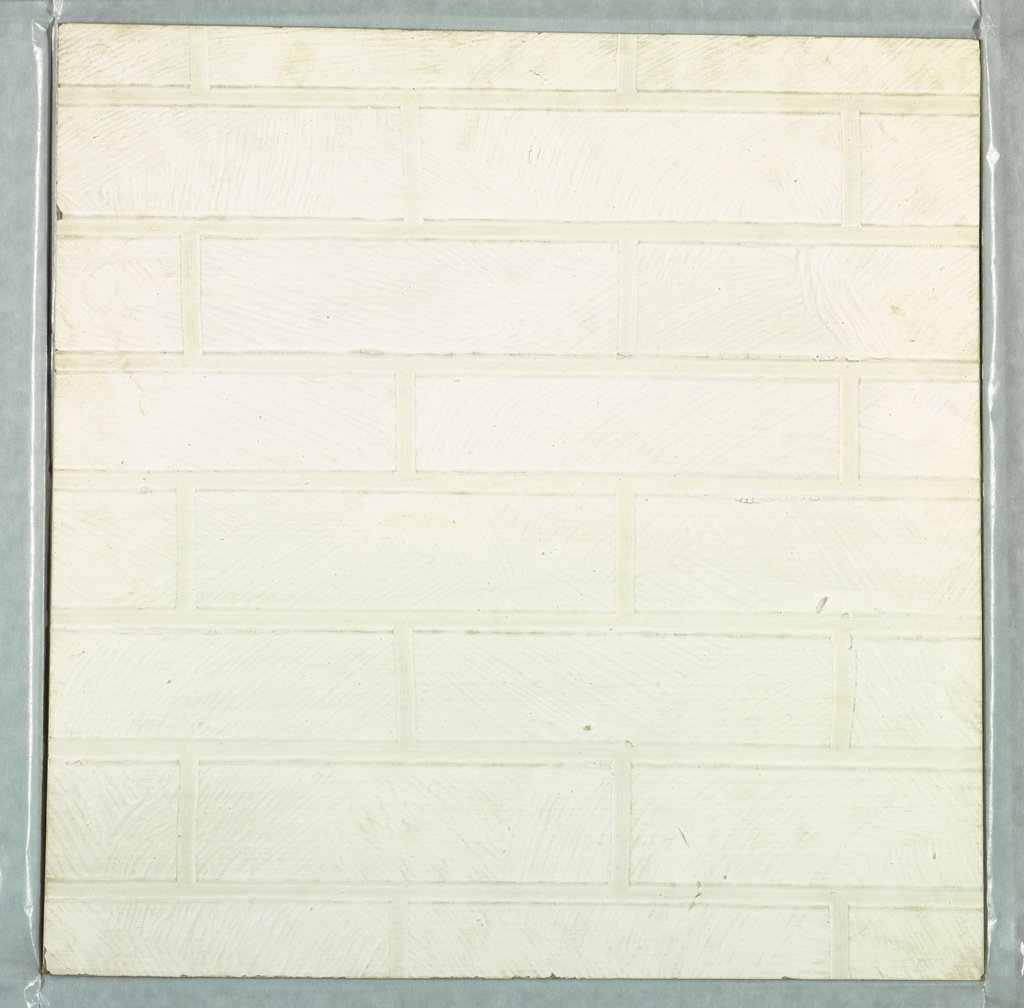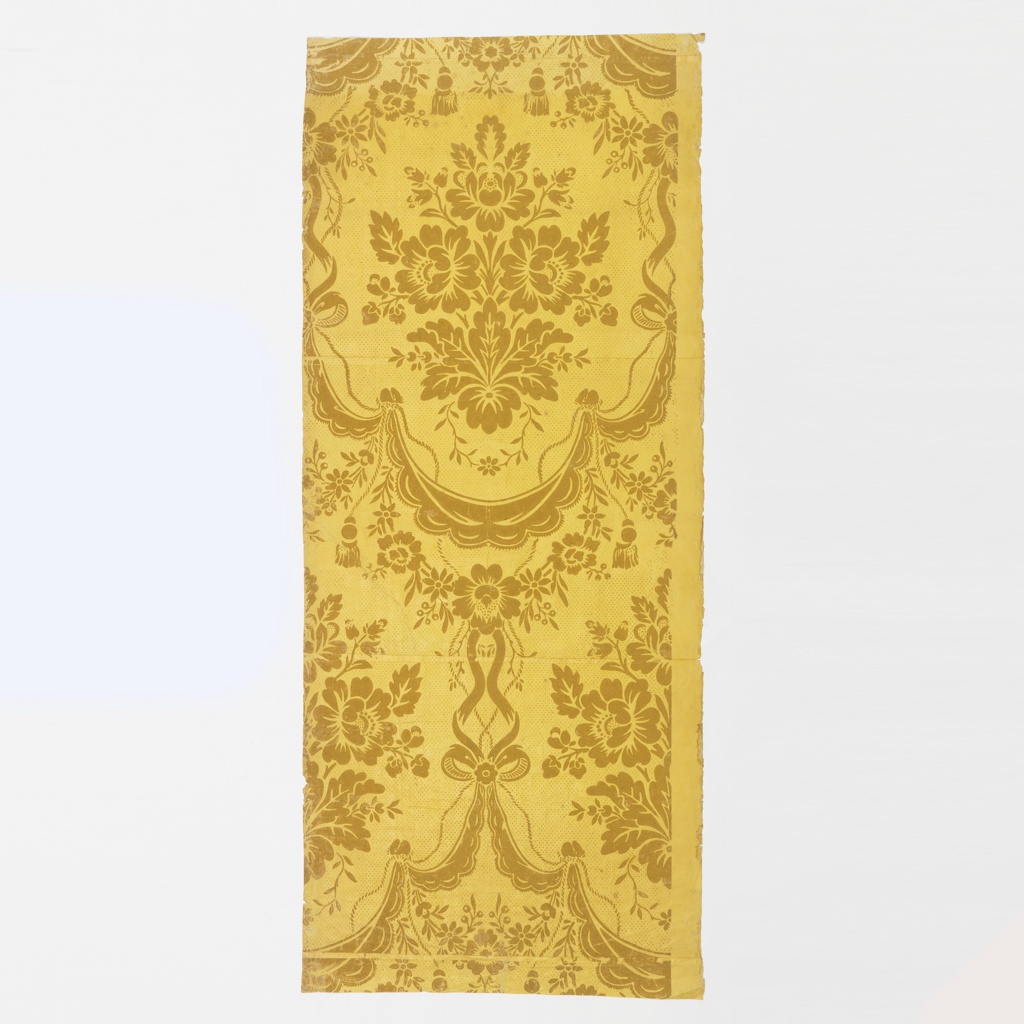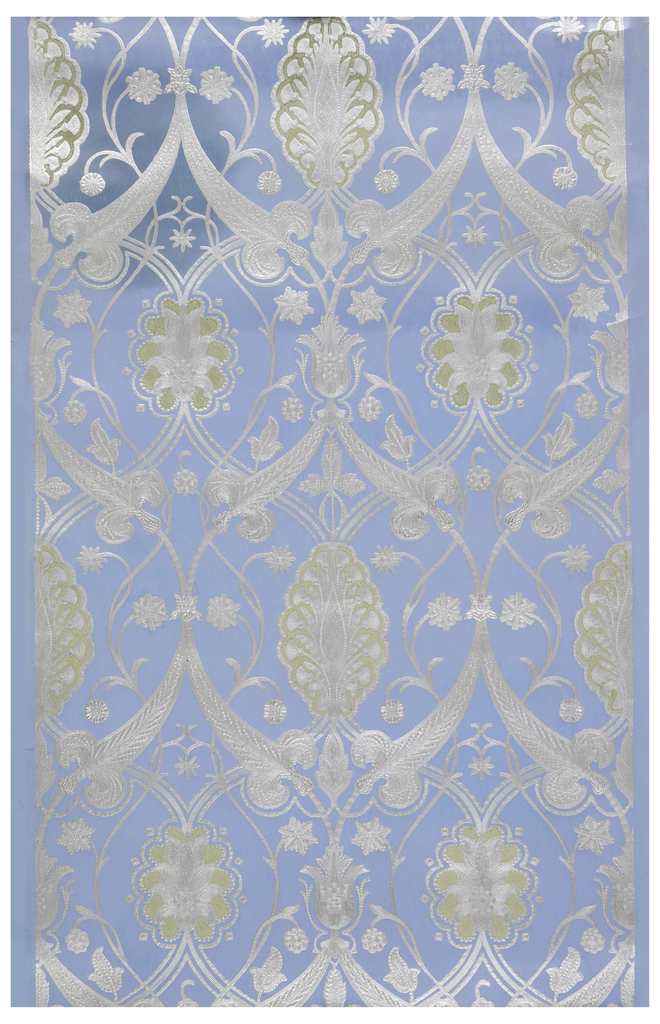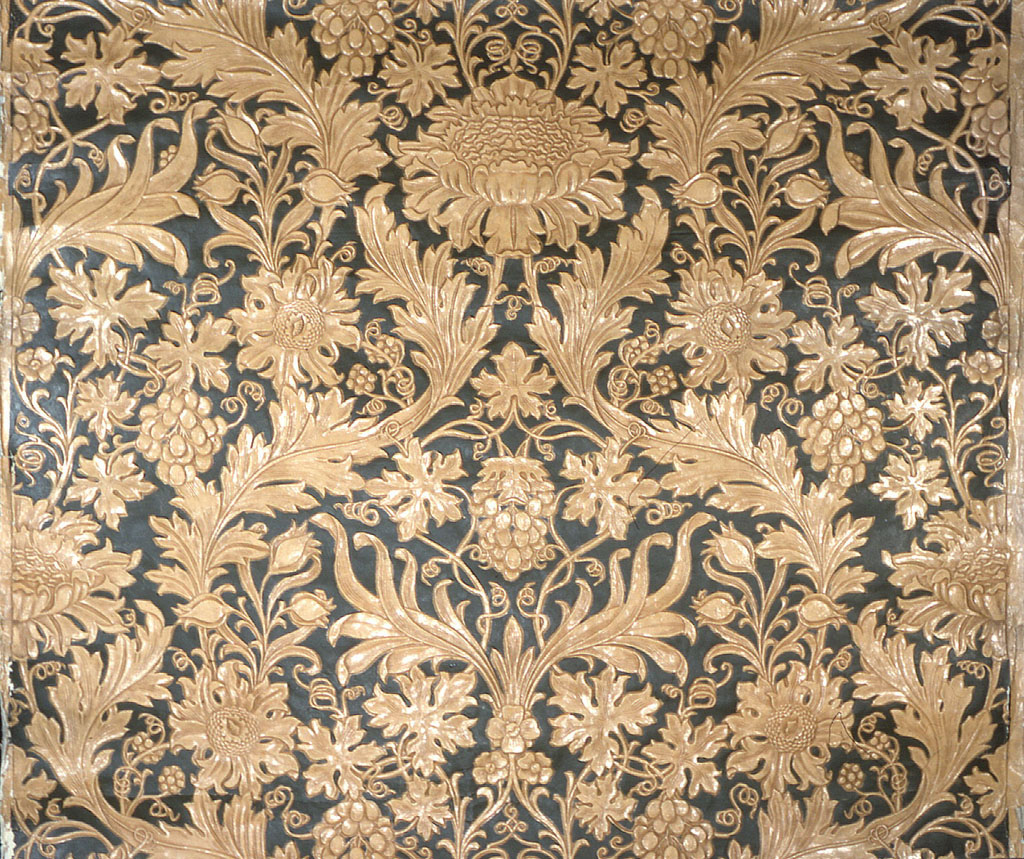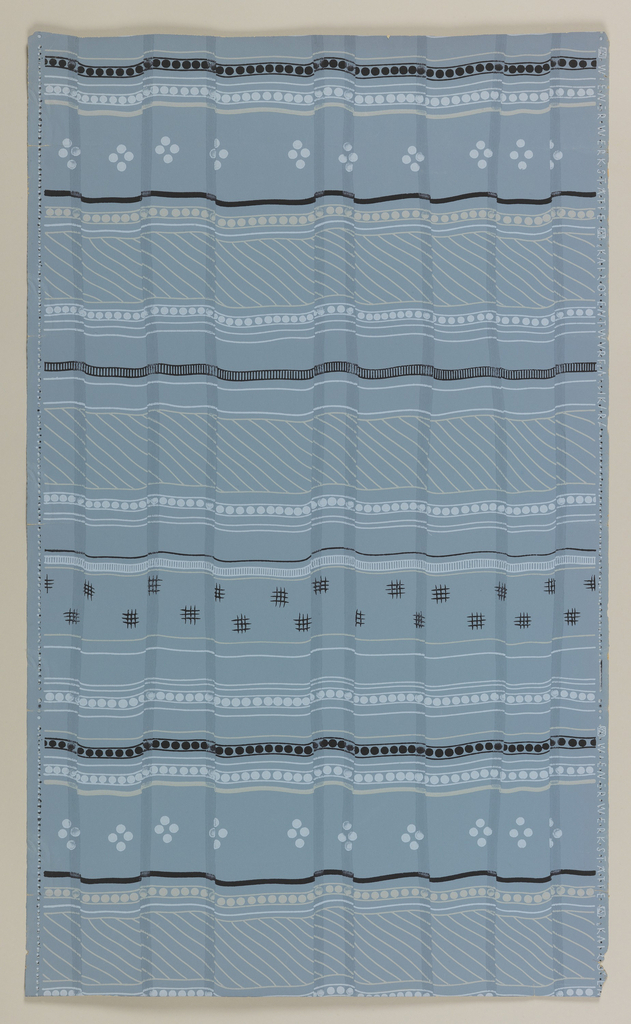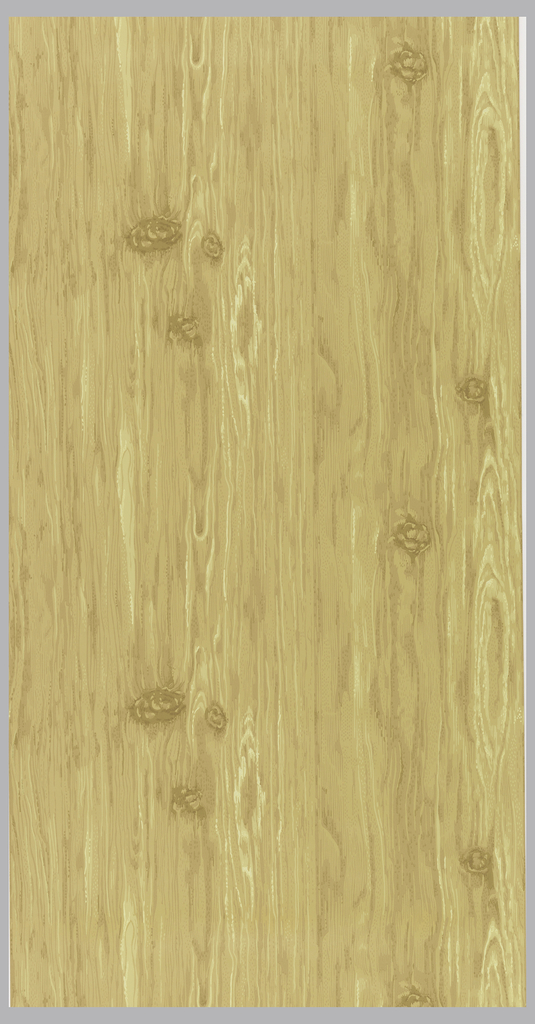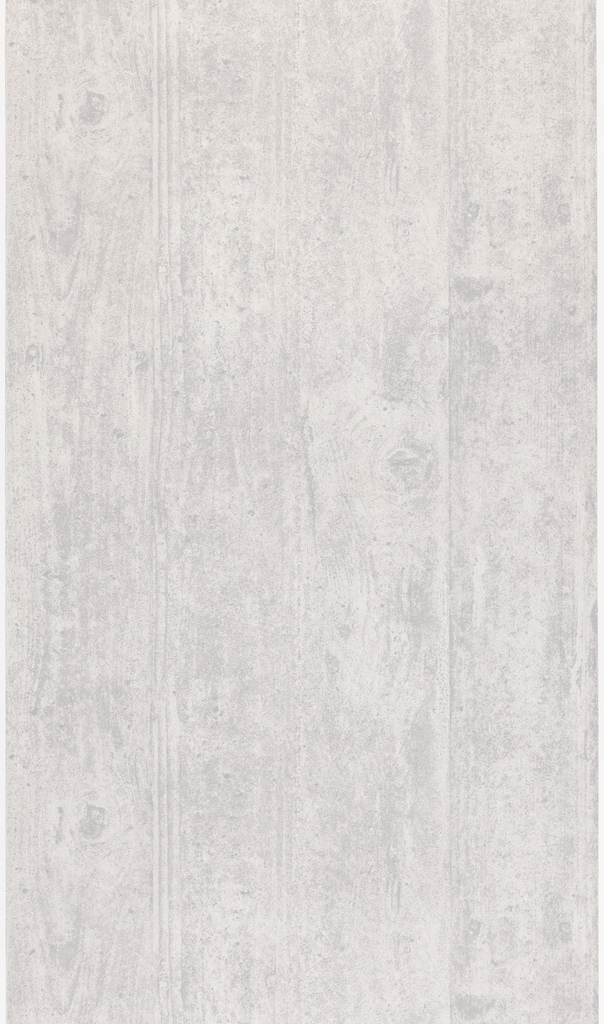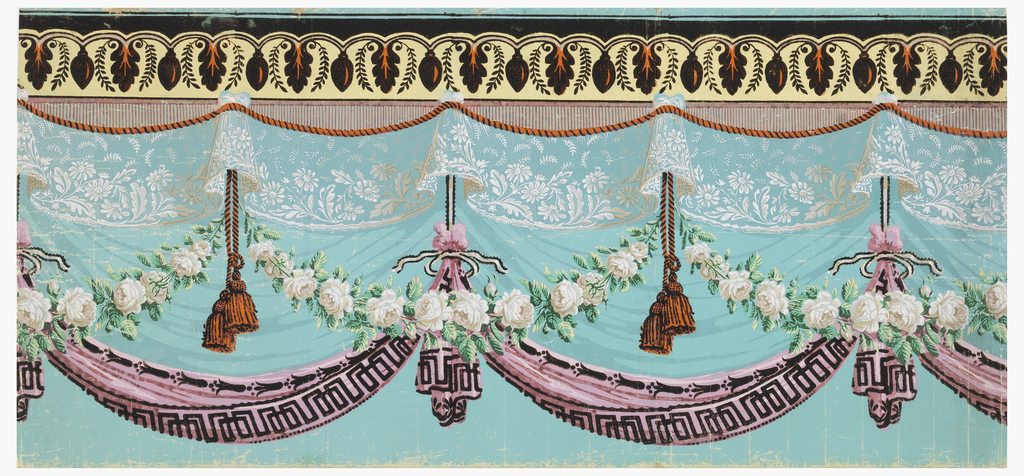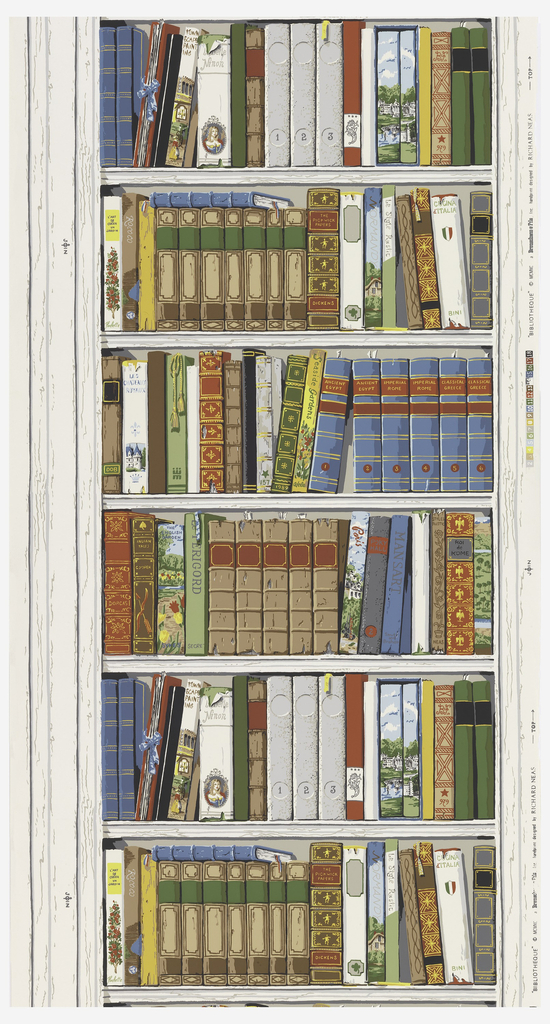Katzenbach & Warren, Inc., one of the major twentieth century New York wallpaper manufacturers, introduced their new line of “Sculptured Wallcoverings” in 1946. This line initially consisted of two relief patterns: one imitating woodgrain, the other straw matting. Additional patterns were introduced in 1948 including Brick. All of the patterns in this line were completely...
During the 17th century, France and England, both major producers and exporters of wallpapers, were printing inexpensive decorative patterns on single sheets of paper. These were multi-use papers and were used for lining trunks and chests, as well as decorating walls. Outlines were printed by crude wood blocks and color was added by applying thin...
Imitation leather papers meticulously reproduce the grain, patterns, and coloring of antique leathers. While these wallpapers were expensive to produce due to all the handwork necessary to capture the embossed leathers, they were much less costly, and quicker to produce, than actual leathers. This sample was produced by M. H. Birge & Sons around 1910,...
Leather hangings were a popular way to decorate walls in Europe in the 18th-century. They were often called Spanish leathers because they originated in Spain in the 17th century, but these early hangings were simply painted. As the popularity of leather hangings increased in the Netherlands and England, it became more popular to emboss the...
Here is an interesting version of a drapery wallpaper design. Wallpapers imitating draperies have been a small but elegant genre since the time of Napolean, when walls draped in fabric were popularized by the design and decorating team of Percier and Fontaine, largely credited with creating the Empire style. Many of the finer papers were...
I have always admired a good woodgrain wallpaper. Woodgrain or faux bois wallpapers have been around almost as long as wallpaper itself and the Cooper Hewitt collection has examples printed in almost every technique including hand painted, woodblock, lithograph, machine and even self-adhesive vinyl. This particular design has always caught my eye as I think...
On first glance the B 100 wallpaper appears to be a woodgrain design. The knots, woodgrain pattern, and individual planks are all clearly visible. But the ominous gray color makes one stop to reconsider, maybe there is more to this than just a woodgrain pattern. Woodgrain designs, usually printed with earthy colors, impart a warm...
Traditionally, wallpapers have imitated more expensive materials, such as architectural details, painted wall decorations, wood grains, marble, and, most often, textiles. In the mid-18th century when wallpapered rooms became a prevailing fashion in England and France, wallpaper borders were as important a decorative element as the coverings themselves. A brilliant swag of printed paper flowers,...
Today, let’s talk books. Or rather, a trompe l’oeil wallpaper printed to appear like a well-stocked bookcase in someone’s library. This is one of the livelier, not to mention convincing, bookcase wallpapers I have seen. And it’s no wonder, it was created by the brilliant decorator, muralist and trompe l’oeil painter Richard Lowell Neas. Many...
